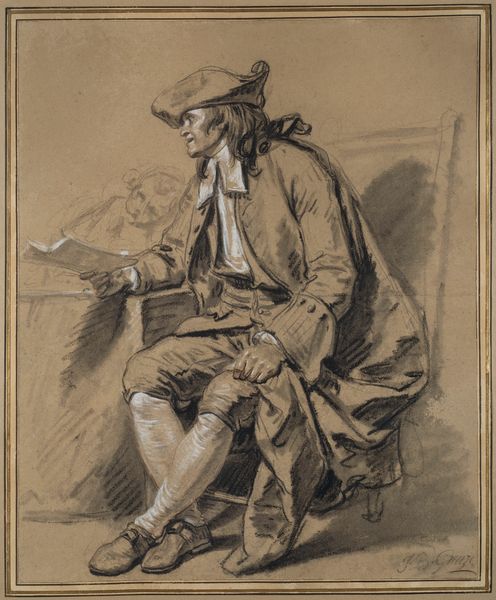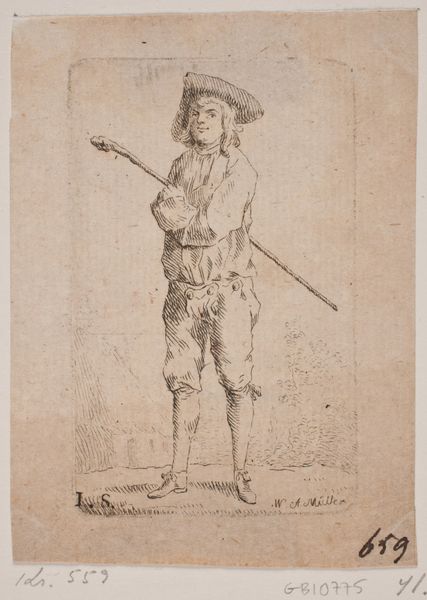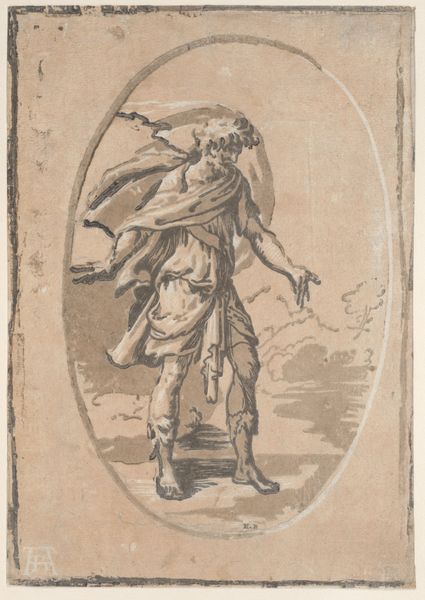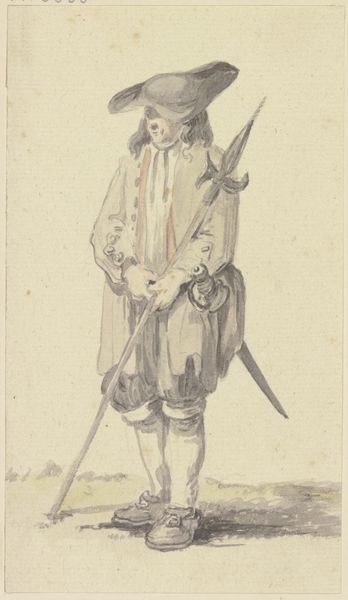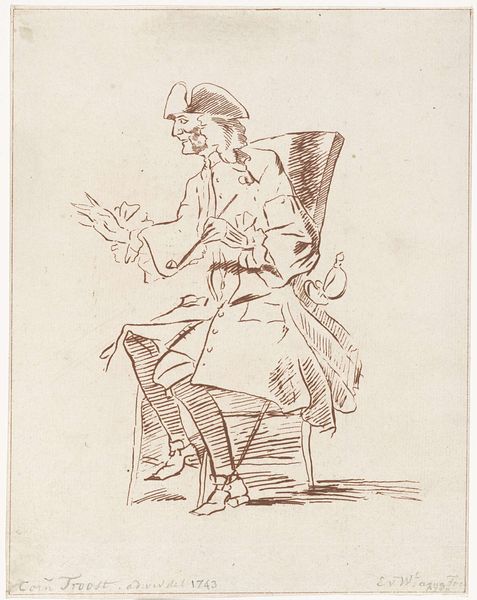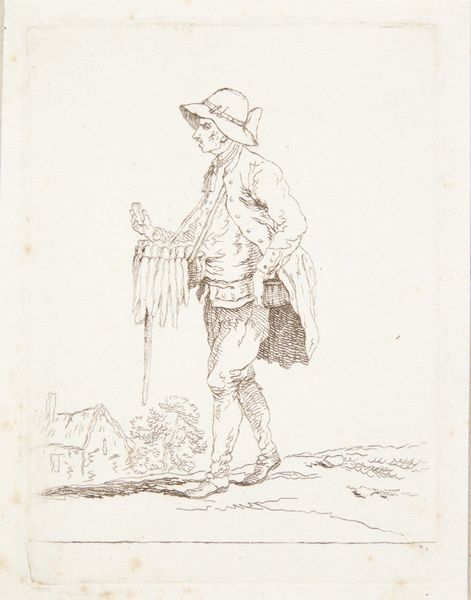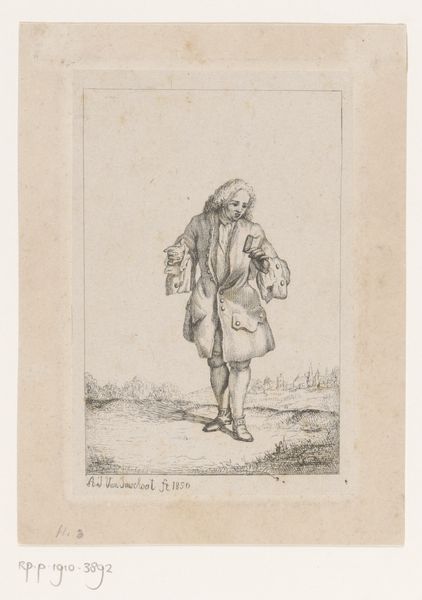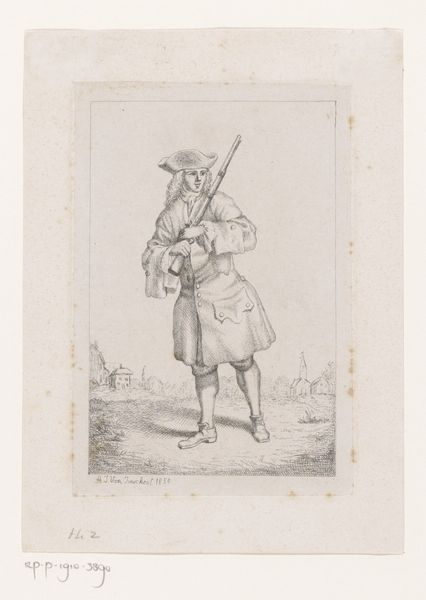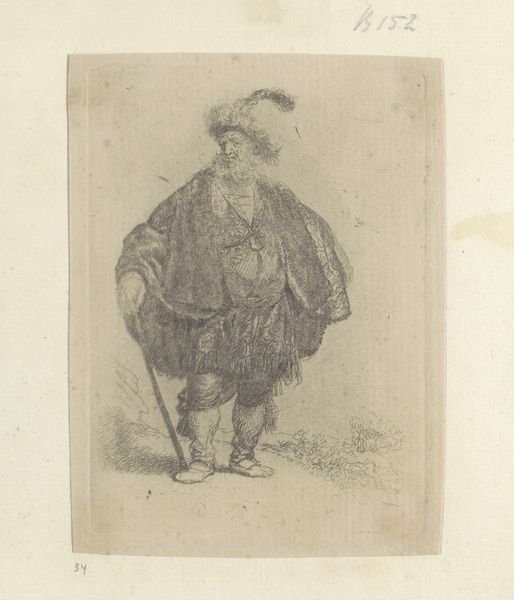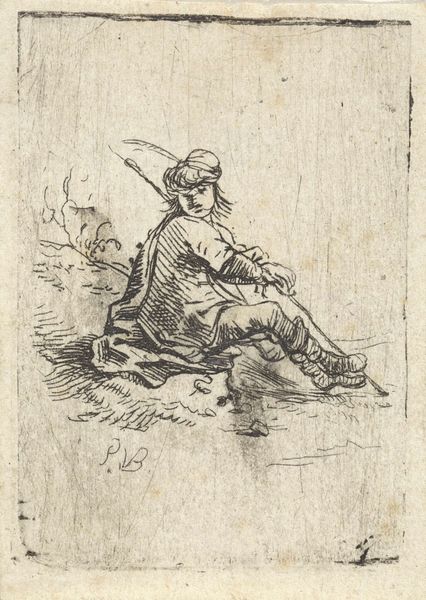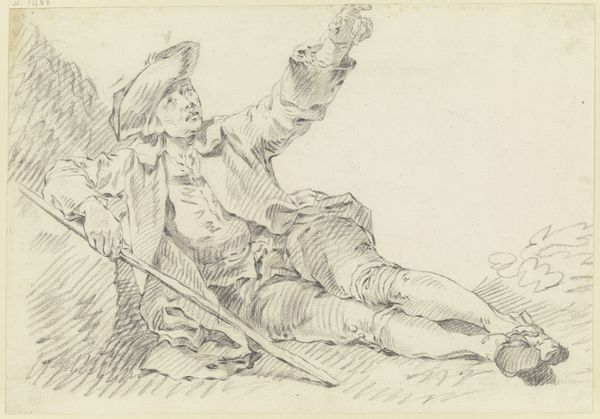
Den engelske digter Gower siddende med en lut ved et bord, på hvilket Herodot ligger opslået 1743 - 1809
0:00
0:00
Dimensions: 179 mm (height) x 147 mm (width) (bladmaal)
Editor: Here we have Nicolai Abildgaard's "The English Poet Gower Seated with a Lute at a Table on Which Herodotus Lies Open," created sometime between 1743 and 1809. It’s an ink drawing, currently held at the SMK. I’m immediately struck by how simple and sparse it is, yet so full of detail in the figure’s posture and clothing. What’s your interpretation? Curator: Focusing on the visual language, observe how Abildgaard masterfully uses line and wash. The dynamism emerges from the contrasting light and shadow. Consider how the deliberate variations in the thickness of the ink lines define the figure’s form, adding a sense of depth. Does this emphasis on form over strict representation enhance its artistic value, or is it a flaw? Editor: I think it enhances it! The sketchy quality adds to the romantic feel. Is there any symbolic meaning embedded in the composition, in the relationship between the figure, the instrument, and the book? Curator: The visual tension established by juxtaposing artistic pursuit—music—with intellectual grounding—Herodotus's history—invites deeper consideration. The artist prompts us to contemplate whether one can reach erudition or greatness via multiple mediums and methods, which speaks to the burgeoning of romantic philosophy. Notice how Abildgaard utilizes the figure’s gesture, leaning into the lute and looking pensively towards Herodotus, to demonstrate such tension and prompt our wondering. Editor: So, by examining the lines, the light, and even the subjects themselves, we find Abildgaard speaking to art's role in understanding ourselves and our place in history. Fascinating! Curator: Precisely. Close reading unlocks how the aesthetic structures underpin deeper meaning.
Comments
No comments
Be the first to comment and join the conversation on the ultimate creative platform.
